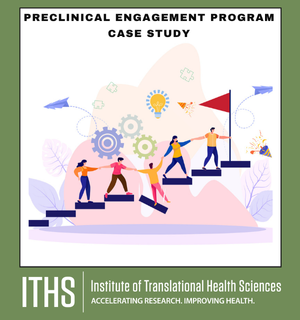Improving generalizability of biomarker results
Preclinical Engagement Program Case Study
 The Challenge
The Challenge
An investigator was asked to evaluate the absence of amyloid and tau biomarker samples for underrepresented groups (URGs) in a larger clinical trial. Concerns were raised about the generalizability of results due to lack of diversity in the biomarker samples. A trial audit indicated that the blood draw was perceived as a barrier to trial participation.
Solution Offered – Community Engagement
The Investigator discussed trial enrollment criteria with an established Community Advisory Board (CAB) comprised of community members from rural and urban underrepresented communities in research. The CAB suggested a change in consent language making the blood draw optional, which was feasible considering the primary aspect of the study was to assess cognitive abilities. Changing the blood draw to optional would enable time to build rapport with participants and increase the likelihood of volunteering for the blood draw at a later time.
Implementation & Results – Outcome
Listening to the advice of the CAB, the Investigator prioritized providing education to the community. The research team established a new bicultural, bilingual engagement team that provided education on the importance of participation in research for underrepresented communities. More education was provided to describe the importance of testing blood for the presence of biomarkers, especially in minoritized communities to ensure study results would be relevant to them. The study consent was edited to enable optional blood draws. The result is that more underrepresented minorities joined the study and 80% of the enrolled agreed to provide blood samples at their first study visit.
Impact – Benefits of Community Engagement
Even though pre-clinical research may not involve direct human contact, community engagement still can benefit this type of research. Community members understand the needs and culture of their communities and provide critical information about patient experiences, recruitment plans, and impacts of study procedures on participants. Integrating community perspectives and implementing recommendations improves research by ensuring relevant populations are represented and results are more generalizable.